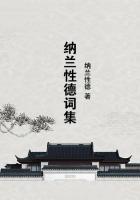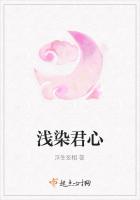The old Spanish historian, Herrera, gravely transcribed in his pages all that the governors of Hayti reported about the bouncing balls.Some fifty years later another Spanish historian related that the natives of the Amazon valley made shoes of this gum; and that Spanish soldiers spread their cloaks with it to keep out the rain.Many years later still, in 1736, a French astronomer, who was sent by his government to Peru to measure an arc of the meridian, brought home samples of the gum and reported that the natives make lights of it, "which burn without a wick and are very bright," and "shoes of it which are waterproof, and when smoked they have the appearance of leather.They also make pear-shaped bottles on the necks of which they fasten wooden tubes.Pressure on the bottle sends the liquid squirting out of the tube, so they resemble syringes." Their name for the fluid, he added, was "cachuchu"--caoutchouc, we now write it.Evidently the samples filled no important need at the time, for we hear no more of the gum until thirty-four years afterward.Then, so an English writer tells us, a use was found for the gum--and a name.
A stationer accidentally discovered that it would erase pencil marks, And, as it came from the Indies and rubbed, of course it was "India rubber."About the year 1820 American merchantmen, plying between Brazil and New England, sometimes carried rubber as ballast on the home voyage and dumped it on the wharves at Boston.One of the shipmasters exhibited to his friends a pair of native shoes fancifully gilded.Another, with more foresight, brought home five hundred pairs, ungilded, and offered them for sale.They were thick, clumsily shaped, and heavy, but they sold.There was a demand for more.In a few years half a million pairs were being imported annually.New England manufacturers bid against one another along the wharves for the gum which had been used as ballast and began to make rubber shoes.
European vessels had also carried rubber home; and experiments were being made with it in France and Britain.A Frenchman manufactured suspenders by cutting a native bottle into fine threads and running them through a narrow cloth web.And Macintosh, a chemist of Glasgow, inserted rubber treated with naphtha between thin pieces of cloth and evolved the garment that still bears his name.
At first the new business in rubber yielded profits.The cost of the raw material was infinitesimal; and there was a demand for the finished articles.In Roxbury, Massachusetts, a firm manufacturing patent leather treated raw rubber with turpentine and lampblack and spread it on cloth, in an effort to produce a waterproof leather.The process appeared to be a complete success, and a large capital was employed to make handsome shoes and clothing out of the new product and in opening shops in the large cities for their sale.Merchants throughout the country placed orders for these goods, which, as it happened, were made and shipped in winter.
But, when summer came, the huge profits of the manufacturers literally melted away, for the beautiful garments decomposed in the heat; and loads of them, melting and running together, were being returned to the factory.And they filled Roxbury with such noisome odors that they had to be taken out at dead of night and buried deep in the earth.
And not only did these rubber garments melt in the heat.It presently transpired that severe frost stiffened them to the rigidity of granite.Daniel Webster had had some experience in this matter himself."A friend in New York," he said, "sent me a very fine cloak of India Rubber, and a hat of the same material.
I did not succeed very well with them.I took the cloak one day and set it out in the cold.It stood very well by itself.Isurmounted it with the hat, and many persons passing by supposed they saw, standing by the porch, the Farmer of Marshfield."It was in the year 1834, shortly after the Roxbury manufacturers had come to realize that their process was worthless and that their great fortune was only a mirage, and just before these facts became generally known, that Charles Goodyear made his entrance on the scene.He appeared first as a customer in the company's store in New York and bought a rubber life-preserver.
When he returned some weeks later with a plan for improving the tube, the manager confided to him the sad tragedy of rubber, pointing out that no improvement in the manufactured articles would meet the difficulty, but that fame and fortune awaited the inventor of a process that would keep rubber dry and firm and flexible in all weathers.
Goodyear felt that he had a call from God."He who directs the operations of the mind," he wrote at a later date, "can turn it to the development of the properties of Nature in his own way, and at the time when they are specially needed.The creature imagines he is executing some plan of his own, while he is simply an instrument in the hands of his Maker for executing the divine purposes of beneficence to the race." It was in the spirit of a crusader, consecrated to a particular service, that this man took up the problem of rubber.The words quoted are a fitting preface for the story of the years that followed, which is a tale of endurance and persistent activity under sufferings and disappointments such as are scarcely paralleled even in the pages of invention, darkened as they often are by poverty and defeat.











